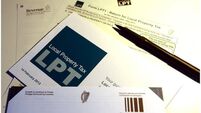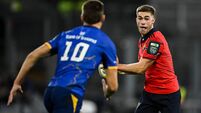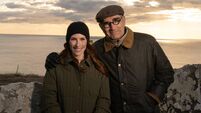Prince Charles helps to free village from shadows of past

He stood a few feet from the slipway at Mullaghmore, listening intently as local hotelier Peter McHugh described the workings of the small harbour, his gaze fixed on the heather-blue water.
Their conversation could have been very different, for Charles lost loved ones here and Peter saw the devastation first hand. But easy chat about boats and fishing is what they, and the people of Mullaghmore, would like this place to inspire.
The IRA detonated the Mullaghmore bomb as a statement about the occupation of Irish soil, 79-year-old Louis Mountbatten making a handy target.
Earl of Burma, last viceroy of India, cousin of the Queen of England and part-time resident of a lofty mansion lording it over a peninsula of stolen land, the symbolism was irresistible.
DISCOVER MORE CONTENT LIKE THIS
The others who died when their fishing boat was blown to smithereens — the earl’s 14-year-old grandson, Nicholas; local boy, Paul Maxwell, 15, and Nicholas’s grandmother, Dorothy Brabourne, 83, were collateral damage, guilty by association.
But having removed one colonialist occupier, as they saw him, the IRA swiftly planted another, recolonising Mullaghmore with sorrowful infamy. It was an uninvited presence that has been hard to displace and the tightness of security in the village reflected the sensitivity of Prince Charles’s visit.
A helicopter hovered overhead while the LÉ Orla guarded the bay and a Garda sub-aqua unit patrolled the harbour. The 13 official vehicles, six Garda vans, motorcade, mounted unit, bicycle unit, foot patrols and plain clothes threatened to swamp the carefully corralled crowd of about 300 waiting to greet the visitors.
Prince Charles first called to the Peace Garden created by nuns in the local Mercy Convent where he met Timothy Knatchbull, twin brother of Nicholas, who still carries the physical scars of the bombing he was lucky to survive. But the Prince emerged looking relaxed and spent longer than his itinerary allowed making his way along the crowd, shaking hands and accepting welcomes from wellwishers.
Among them was Seamus Quinn who was with his wife and two young sons in a mobile home across the bay when he heard the explosion and saw the cloud of smoke rise into the summer sky on August 27, 1979.
“I saw people taking bits of the boat out of the water. A helicopter came over and lifted a body out. Other people were carrying a door with a body on it. It was a large person. I took it to be Lord Mountbatten. I couldn’t believe what I was seeing.”
Seamus is from Omagh which was to face its own atrocity two decades later but he refuses to allow the evils of the past cloud his love of either his home or Mullaghmore, which he calls his second home: “We’re coming here 46 years. The grandchildren come with us now. I’ll never think anything but good of it.”
Mary Barry, who caught the Prince of Wales’s eye with her Welsh flag, is determined the world should only think good thoughts of Mullaghmore. Born here, she has returned to live in the village with her Welsh partner and nine-year-old daughter, Katie. She was the same age as Katie when the bombing happened and, growing up, it was a frequent topic of conversation.
“It was always talked about. Even when you went abroad and people asked where you were from, they would make the association with what happened here,” she said. Not any more, she said.
“This is great today. It shows us in a different light. It draws a line under the past. It puts us on the map for another reason.”
Those who brought bloodshed to Mullaghmore in the name of freedom could never have imagined that 36 years on, people would look to a royal visit to liberate them from the past.
DISCOVER MORE CONTENT LIKE THIS












